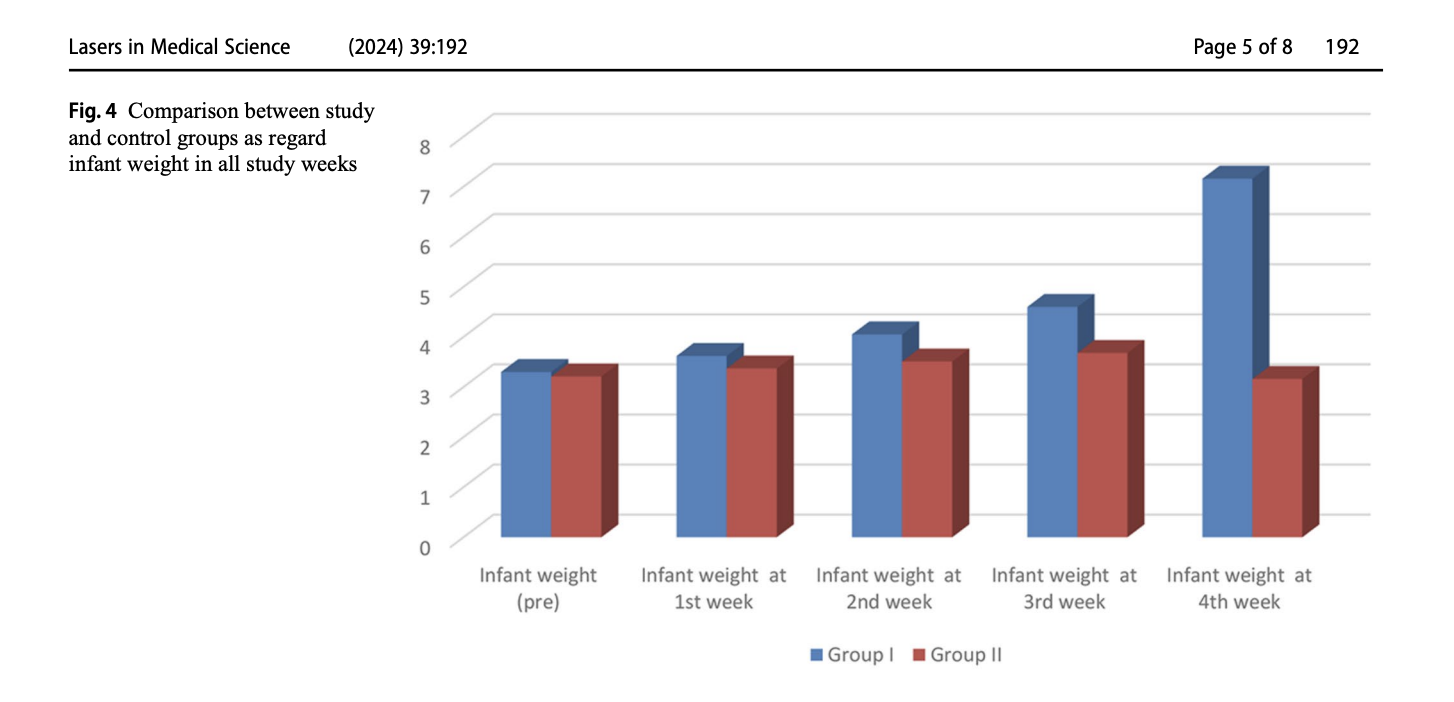How Red Light Therapy Eases Nipple Pain and Boosts Milk Production in Breastfeeding Mothers
Reduce Nipple Pain and Improved Supply in Breastfeeding Moms
Breastfeeding offers countless benefits for both mothers and their infants. However, some mothers face significant challenges in the early postpartum period, including nipple pain and fissures, which can be so intense that they may decide to stop breastfeeding earlier than planned. Photobiomodulation (PBM), can be an effective treatment for managing nipple pain, promoting healing, and supporting lactation. My trusty red light torch comes with me to my postpartum visits in those early days - I find pre-treating on tender nips (before soreness really kicks in) helpful in getting ahead of the issue and keeping mom comfortable. My torch also includes antimicrobial blue wavelengths.
The Problem: Nipple Pain and Fissures
According to research, the majority of mothers (80-90%) experience some form of nipple pain in the first few weeks postpartum. Causes include latching issues, position, short frenulum, or tongue tie, which can lead to nipple trauma and fissures. If left untreated, these fissures may lead to complications like mastitis, abscesses, and ultimately, early weaning due to pain. The impact of this pain goes beyond discomfort; stress and decreased breastfeeding frequency often result in reduced milk production and ultimately the choice to supplement with formula and/or to stop breastfeeding completely.
Introducing Photobiomodulation (PBM)
Photobiomodulation, also known as low-level laser therapy (LLLT), is a non-invasive, safe treatment that uses photons at a non-thermal irradiance level to stimulate biological processes such as pain relief, tissue regeneration, and reduction in inflammation. PBM has been explored as a method to alleviate nipple pain and support lactation by improving the healing of nipple fissures.
Compare popular red light device options for postpartum moms.
Study Protocols and Treatment
A 2024 study conducted on 50 breastfeeding women with nipple pain and fissures offers valuable insights into PBM’s effectiveness compared to traditional treatments, such as anti-inflammatory topical creams. The study divided the participants into two groups:
Group I (PBM group): Received 12 sessions of PBM using a 660 nm diode laser, 40 milliwatts of power, 5 joules per square centimeter for 5 seconds, delivered to the nipple region. These women underwent three sessions per week for four weeks.
Group II (Control group): Applied anti-inflammatory cream (containing tocopherol, panthenol, almond oil, and other soothing ingredients) after every feed.
Pain was measured using the Visual Analogue Scale (VAS), infant weight was tracked to determine milk production.
VAS was used to measure mom's pain.
Key Findings
The study found that PBM was significantly more effective in reducing nipple pain, promoting fissure healing, and increasing milk production compared to anti-inflammatory creams.
Pain Reduction: By the third and fourth weeks, Group I showed a significant reduction in VAS scores, indicating decreased pain. At the fourth week, mothers in the PBM group had a VAS score averaging 1.68 compared to 5.48 in the control group.
Nipple Healing: PBM also improved signs of inflammation such as redness, swelling, and fissure healing. By the fourth week, 88% of PBM-treated mothers showed no signs of fissures, compared to 60% in the control group.
Increased Milk Production: A key indicator of PBM’s effectiveness was the increased weight gain in infants. By the fourth week, infants in the PBM group showed significant weight gain compared to those in the control group, reflecting improved milk production. The average infant weight increased by 7.16 kg in Group I, compared to 4.16 kg in Group II.
Is it just me or are you reading this thinking - 4 weeks of decreasing pain? I’m surprised any of the moms continued to breastfeed. The protocol only included 3 sessions per week - why not 3 times a day? That’s what my clients use and it works incredibly well so they can continue to breastfeed while we adjust latch, positioning etc.
Infant weight gain from before the intervention to the 4th week.
Recommendations
PBM as First-Line Therapy: Given the study’s results, PBM should be considered as an early intervention for mothers experiencing nipple pain along with latch, position and other investigations. By starting treatment within the first few days postpartum, breastfeeding may be protected, milk production improved and mom’s stress levels reduced significantly!
Standard Protocols: A treatment plan involving 12 sessions over four weeks appears optimal. Ensure that the PBM device used operates at 660 nm wavelength, with appropriate energy density (5 J/cm²), for effective results.
Education and Access: Lactation professionals should be trained in the safe use of PBM devices and inform breastfeeding mothers about this option. Providing access to PBM, either through clinics or home-use devices, may help more women continue breastfeeding comfortably.
Integration with Other Therapies: While PBM is highly effective, it is important to also educate mothers on evidence-based latch techniques and address any underlying issues, such as tongue tie, that could be contributing to nipple trauma.
What’s Next?
Photobiomodulation has emerged as a powerful tool for managing nipple pain in early postpartum. This non-invasive therapy not only reduces pain and accelerates healing but also boosts milk production, which is critical for supporting healthy infant growth. For lactation professionals, incorporating PBM into standard care protocols can make a significant difference in breastfeeding outcomes, helping mothers overcome pain and enjoy a more successful breastfeeding journey.
By embracing innovative approaches like PBM, we can provide better support to breastfeeding mothers, ensuring that they continue to breastfeed comfortably and that their infants receive the best possible nutrition.
For further reading, refer to the full study published in Lasers in Medical Science
Grab your home laser and other red light devices for postpartum here.
Tracyt


